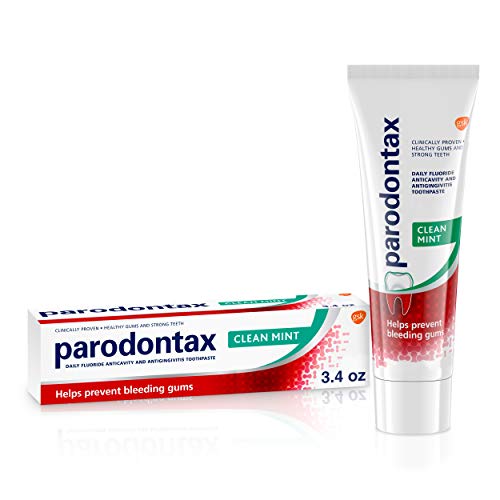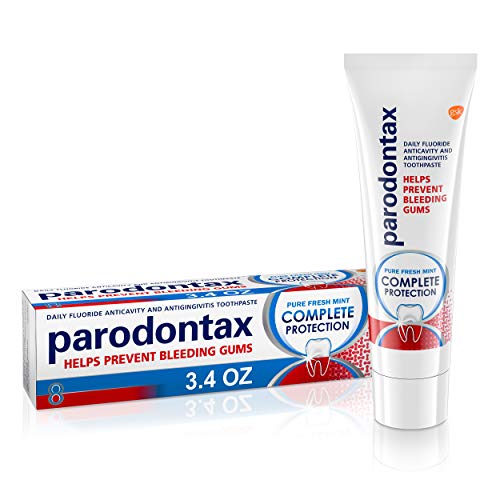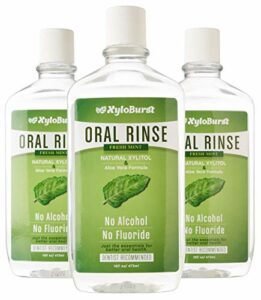Have you ever experienced the discomfort of gum bleeding? We understand how frustrating and worrisome it can be. That’s why we are here to share with you an effective solution that might be sitting right in your bathroom cabinet – toothpaste. In this blog post, we will delve into the wonderful benefits of toothpaste when it comes to addressing gum bleeding. Whether you’ve dealt with this issue before or are simply curious about maintaining optimal oral health, we’ve got you covered. So, let’s explore how toothpaste can help alleviate gum bleeding and bring back that confident smile.
Find Relief for Gum Bleeding with These Bestselling Toothpastes
Understanding gum bleeding
Gum bleeding can be a distressing experience, but understanding its causes and taking appropriate action is crucial for maintaining good oral health. In this blog section, we will delve into what gum bleeding is, explore its common causes, and emphasize the importance of addressing this issue promptly.
What is Gum Bleeding?
Gum bleeding, also known as gingival bleeding, refers to the occurrence of blood when brushing, flossing, or even spontaneously from the gums. It is often an indication of an underlying problem in the oral cavity and should not be ignored. While occasional gum bleeding can happen to anyone, persistent or excessive bleeding may be a sign of a more serious oral health condition.
Common Causes of Gum Bleeding
- Gingivitis: This is the most common cause of gum bleeding. Gingivitis occurs due to the accumulation of plaque along the gumline, leading to inflammation and bleeding gums. Proper oral hygiene and regular dental check-ups are essential for preventing and treating this condition.
- Periodontitis: If left untreated, gingivitis can progress to periodontitis, a more severe form of gum disease. Periodontitis causes the gums to pull away from the teeth, forming pockets that become infected. Bleeding gums are a primary symptom of this advanced stage of gum disease.
- Brushing too hard: Aggressive brushing with a hard-bristled toothbrush can cause gum irritation and bleeding. It is important to use a soft-bristled brush and gentle, circular motions to clean teeth and gums effectively without causing damage.
- Improper flossing technique: Incorrect flossing techniques, such as snapping the floss against the gums, can lead to bleeding. Using a gentle sawing motion and sliding the floss between teeth without placing excessive pressure on the gums is the correct way to floss.
- Hormonal changes: Hormonal fluctuations during pregnancy or menopause can make gums more sensitive and prone to bleeding. Maintaining good oral hygiene and regular dental visits are especially important during these times.
- Certain medications: Some medications, such as blood thinners, can increase the risk of gum bleeding. If you notice increased gum bleeding after starting a new medication, consult your dentist or healthcare provider.
Addressing Gum Bleeding for Oral Health
Promptly addressing gum bleeding is crucial for maintaining good oral health. Ignoring the problem can lead to more severe conditions, including tooth loss and systemic health issues. Here are some important steps to take if you experience gum bleeding:
- Practice proper oral hygiene: Brush your teeth at least twice a day using a soft-bristled brush and fluoride toothpaste. Don’t forget to gently clean your gums and tongue. Additionally, floss daily to remove plaque and debris from between teeth.
- Use an antimicrobial mouthwash: Rinsing with an antimicrobial mouthwash can help reduce bacteria in the mouth and promote gum health. Look for a mouthwash that is specifically formulated to prevent gum disease.
- Schedule regular dental visits: Regular dental check-ups and professional cleanings are essential for preventing and addressing gum bleeding. Your dentist can identify and treat any underlying issues, provide personalized oral hygiene recommendations, and monitor your overall oral health.
- Maintain a healthy lifestyle: A balanced diet, regular exercise, and avoiding harmful habits like smoking can contribute to healthy gums and overall oral health.
Remember, gum bleeding should never be ignored. If you notice persistent or excessive bleeding, consult your dentist as soon as possible for a proper diagnosis and appropriate treatment.
Sources:
- Mayo Clinic
- American Dental Association
- National Institute of Dental and Craniofacial Research
How toothpaste can help
Gum bleeding can be a common and concerning issue that many people experience. It can be caused by various factors, such as poor oral hygiene, gum disease, or even certain medications. If you are dealing with gum bleeding, you may be surprised to learn that toothpaste can actually help alleviate this problem. In this blog post, we will explore the specific ingredients in toothpaste that can effectively reduce gum bleeding and promote healthier gums.
Antimicrobial Properties
One of the key reasons why toothpaste can help with gum bleeding is its antimicrobial properties. Certain toothpaste formulations contain ingredients that can effectively combat harmful bacteria in your mouth, which can contribute to gum inflammation and bleeding. These antimicrobial ingredients include:
- Triclosan: This powerful antibacterial agent targets and kills harmful bacteria in the mouth, reducing inflammation and bleeding.
- Zinc citrate: Known for its antimicrobial properties, zinc citrate can help control the growth of bacteria and prevent gum disease.
- Stannous fluoride: Besides fighting tooth decay, stannous fluoride also has antibacterial properties that can help reduce gum inflammation.
Anti-Inflammatory Properties
In addition to its antimicrobial properties, toothpaste can also have anti-inflammatory effects on the gums. This is particularly beneficial for those experiencing gum bleeding due to gum disease or inflammation. Some toothpaste formulations contain ingredients that help alleviate gum inflammation, such as:
- Sodium bicarbonate: Also known as baking soda, sodium bicarbonate has mild anti-inflammatory properties that can help soothe irritated gums.
- Aloe vera: This natural ingredient has been used for centuries to calm inflammation and promote healing. Toothpaste with aloe vera can help reduce gum bleeding and improve overall gum health.
Choosing the Right Toothpaste
When selecting a toothpaste to help with gum bleeding, it’s important to look for certain key ingredients and consider your specific needs. Here are some factors to consider:
- Antimicrobial ingredients: Opt for toothpaste that contains triclosan, zinc citrate, or stannous fluoride to combat bacteria.
- Anti-inflammatory ingredients: Look for toothpaste with sodium bicarbonate or aloe vera to reduce gum inflammation.
- Fluoride content: Fluoride helps strengthen teeth and prevent tooth decay, so ensure your toothpaste contains the appropriate amount of fluoride.
- Sensitivity considerations: If you have sensitive gums, choose a toothpaste formulated for sensitive teeth and gums to prevent further irritation.
Benefits of Using Toothpaste for Gum Bleeding
Using toothpaste to combat gum bleeding can offer numerous benefits, including:
- Reduction in gum inflammation and bleeding.
- Enhanced oral hygiene and prevention of gum disease.
- Fresh breath and improved overall oral health.
- Convenience and affordability compared to other treatment options.
Choosing the right toothpaste
Gum bleeding can be a common dental issue that many people experience at some point in their lives. It can range from mild to severe, and addressing it promptly is essential for maintaining good oral health. One of the key steps in managing gum bleeding is selecting the right toothpaste. In this blog section, we will guide you through the factors to consider when choosing a toothpaste specifically for gum bleeding, including fluoride content, antibacterial ingredients, and recommendations for specific dental conditions.
Fluoride Content
Fluoride is a mineral that plays a crucial role in preventing tooth decay and strengthening enamel. When it comes to toothpaste for gum bleeding, it’s important to choose one that contains fluoride. Here’s why:
- Fluoride helps to remineralize weakened enamel, making it more resistant to acid attacks.
- It promotes the repair of early signs of tooth decay, which can contribute to gum bleeding.
- Fluoride also inhibits the growth of harmful bacteria in the mouth, reducing the risk of gum inflammation and bleeding.
When selecting a toothpaste with fluoride, look for the American Dental Association (ADA) seal of acceptance on the packaging. This seal ensures that the toothpaste has met the ADA’s criteria for safety and effectiveness.
Antibacterial Ingredients
Gum bleeding often occurs due to the presence of bacteria in the mouth, which can lead to gum inflammation and infection. To address this issue, consider toothpaste that contains antibacterial ingredients. These ingredients help to:
- Reduce the number of harmful bacteria in the mouth, preventing gum bleeding caused by bacterial infections.
- Control plaque buildup, which can contribute to gum inflammation and bleeding.
- Promote a healthier oral environment by eliminating harmful bacteria that can cause gum problems.
Some common antibacterial ingredients to look for in toothpaste include triclosan, cetylpyridinium chloride (CPC), and essential oils like tea tree oil. These ingredients have been shown to effectively combat bacteria and reduce gum bleeding.
Recommendations for Specific Dental Conditions
Different individuals may have specific dental conditions that contribute to gum bleeding. It’s important to consider these conditions when selecting a toothpaste. Here are a few examples:
- Gingivitis: If you have gingivitis, a mild form of gum disease characterized by gum inflammation and bleeding, consider a toothpaste specifically formulated for gingivitis. These toothpastes often contain additional ingredients, such as stannous fluoride or herbal extracts, to help reduce gum inflammation and promote gum health.
- Sensitive Teeth: If you experience gum bleeding alongside tooth sensitivity, opt for a toothpaste designed for sensitive teeth. These toothpastes contain desensitizing agents that help alleviate tooth sensitivity while also addressing gum bleeding.
Proper toothbrushing technique
Gum bleeding can be a distressing issue, causing discomfort and concern for many individuals. But did you know that practicing the proper toothbrushing technique can play a significant role in managing and even preventing gum bleeding? In this blog post, we will guide you through step-by-step instructions on how to brush your teeth effectively and gently to promote gum health.
Step 1: Choosing the Right Toothbrush
Selecting the right toothbrush is the first step towards maintaining healthy gums. Consider the following tips when choosing your toothbrush:
- Opt for a soft-bristled toothbrush: Soft bristles are gentle on your gums, minimizing the risk of irritation and bleeding.
- Look for a toothbrush with a small head: A smaller head allows for better maneuverability, enabling you to reach all areas of your mouth easily.
Step 2: Proper Brushing Technique
Now that you have the right toothbrush, it’s time to master the proper brushing technique. Follow these steps:
- Position your toothbrush: Hold your toothbrush at a 45-degree angle against your gumline.
- Brush in gentle circular motions: Using small, circular motions, gently brush the outer and inner surfaces of your teeth.
- Pay attention to your gumline: Be thorough in cleaning the area where your gums meet your teeth.
- Brush your tongue: Don’t forget to brush your tongue gently to remove bacteria and freshen your breath.
- Don’t forget the chewing surfaces: Clean the chewing surfaces of your teeth by using a back-and-forth motion.
Step 3: Duration and Frequency
Brushing your teeth effectively requires both time and frequency. Follow these guidelines:
- Brush for two minutes: Spend at least two minutes brushing your teeth during each session.
- Brush twice a day: Brush your teeth twice a day, ideally in the morning and before bed, to maintain optimal oral hygiene.
Additional Tips to Promote Gum Health
In addition to the proper brushing technique, here are some extra tips to keep your gums healthy:
- Floss daily: Regular flossing helps remove plaque and debris from areas that your toothbrush cannot reach.
- Use an antiseptic mouthwash: Rinse with an antiseptic mouthwash to kill bacteria and reduce gum inflammation.
- Visit your dentist regularly: Regular dental check-ups are crucial for identifying and addressing any gum-related issues promptly.
Benefits of Proper Toothbrushing Technique
Using the proper toothbrushing technique yields several benefits for your gums and overall oral health:
- Reduced gum bleeding: By gently and effectively removing plaque, bacteria, and debris, you can minimize gum bleeding.
- Healthy gum tissue: Proper brushing helps maintain healthy gum tissue, reducing the risk of gum disease.
- Improved oral hygiene: By following the correct technique, you can enhance your overall oral hygiene, preventing tooth decay and other dental issues.
Remember, knowledge alone is not enough—it’s essential to put these techniques into practice consistently. By incorporating the proper toothbrushing technique into your daily routine, you can take charge of your oral health and keep gum bleeding at bay.
Understanding the benefits of toothpaste in alleviating gum bleeding
In conclusion, we have explored how toothpaste can help with gum bleeding. We have learned that toothpaste containing certain key ingredients, such as fluoride and antibacterial properties, can aid in reducing inflammation and promoting gum health. However, it is essential to understand that toothpaste alone may not be sufficient to address persistent gum bleeding issues. Regular dental check-ups and consulting with a dentist are crucial in determining the underlying cause and receiving appropriate treatment. Therefore, we recommend prioritizing oral hygiene practices, including brushing with toothpaste, while also seeking professional advice for any concerning gum bleeding problems. Remember, your dental health is important, and we encourage you to take proactive steps to maintain a healthy smile.






















